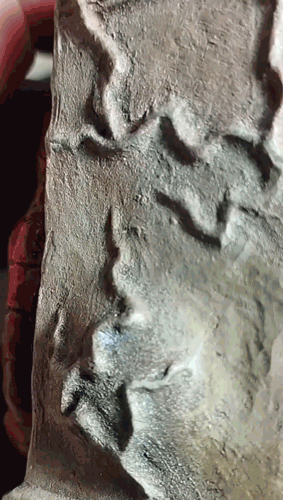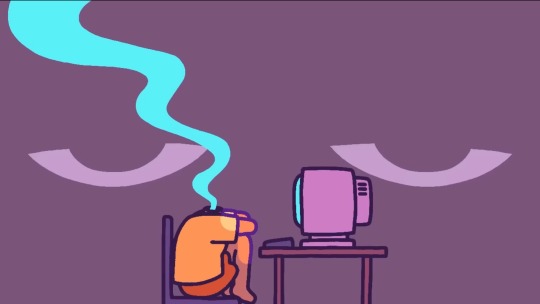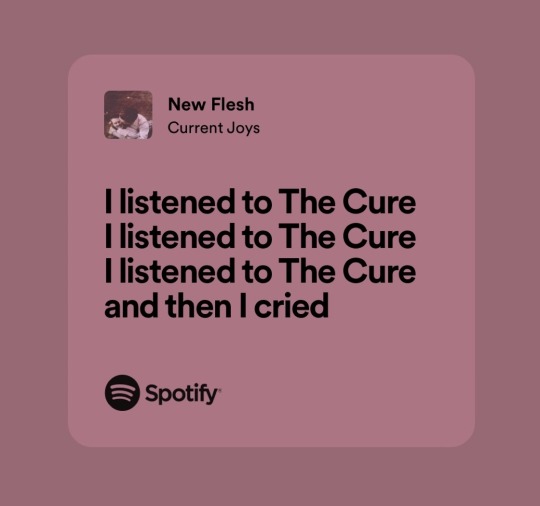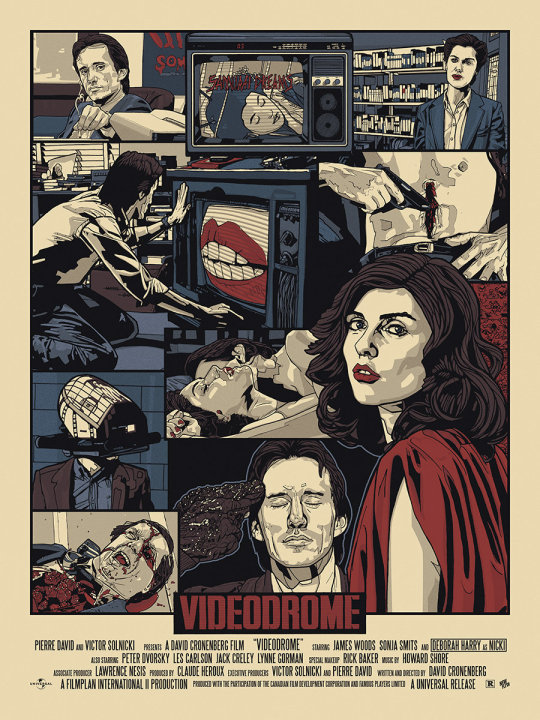#new flesh
Text


I've made this Videodrome sculpture with my boyfriend. Check it out!
Available in Arte Feudo's Etsy Shop.
#Arte Feudo#Sculpture#Videodrome#art#Cronenberg#David Cronenberg#body horror#new flesh#gore#toy art#art toy#horror art#videodrome tv#tv#Debbie Harry#lips#body parts#fantasy art#resin figure
465 notes
·
View notes
Text


"There's a void to fill"
#me#priest#priest band#the band priest#new flesh#eyeliner#goth#white lipstick#body machine#body machine priest#priest nightcrawler#nightcrawler#Spotify
26 notes
·
View notes
Text
Til’ I Die.

Based on these two images from Crumb/Cuptoast’s animation!


If you haven’t seen it yet, go check it out! https://youtu.be/9nOdU7k1Liw
#I love crumb and her art it really inspires me :))#the stories she tells through her animations really resonate with me#art#digital aritst#my art !#crumb fanart#crumb cuptoast#new flesh#cuptoast#cuptoast fanart
45 notes
·
View notes
Text
5 notes
·
View notes
Text

11 notes
·
View notes
Photo

Videodrome by New Flesh
6 notes
·
View notes
Text
lyric of the day ˚♫⋆。˚ ⋆
"tried to write a song, tried to write a song
i tried to write a song i think you'd like
no one gives a shit, no one gives a shit
no one gives a shit about my life
'til i die"
new flesh
current joys
4 notes
·
View notes
Text
2 notes
·
View notes
Text
Eu escutei The Cure
E eu chorei
Eu assisti Videodrome
E perdi a cabeça
Eu tenho pesadelos
O tempo todo
Então eu fico acordado
A noite toda
Eu digo que vou embora
Mas acho que você está certo
Vou ficar aqui
Até eu morrer
2 notes
·
View notes
Photo

“AT THE ROOT of David Cronenberg’s lifelong project is, of course, the flesh. And at the root of his engagement with the flesh is an apparent parting of the ways between evolution and reproduction. On the one hand, his most iconic characters—Seth Brundle in The Fly, Max Renn in Videodrome, the twin gynecologists in Dead Ringers, and, now, Saul Tenser in Crimes of the Future—turn away from the “normal” path of biological reproduction and toward a shadow realm where flesh and spirit combine. They are driven to explore the twisting tributaries and back alleys of the human bodily experience rather than passing their genes on to the next generation (with the possible exception of Seth Brundle). Having refused to become fathers, these men become artists, seekers compelled to abandon the human community, with its seemingly redundant circle of life, in favor of lonely but essential contact with the taboo forces that swim through our DNA just as powerfully as the urge to reproduce and care for our young.
The grotesque ways in which these body artists (to borrow a phrase from Don DeLillo, one of Cronenberg’s literary inspirations and spirit colleagues) offer themselves up as vessels for the new flesh are immensely stylish and alluring, but, in every one of Cronenberg’s “body horror” films before Crimes of the Future, they’ve also been biologically doomed, usually culminating in early death. I think of this archetype as the “heroic pervert,” a kind of warped hero who redeems those who witness his dissolution not by conquering evil or sacrificing himself for the greater good, but by following his own compulsions beyond the furthest limits of self-regard, unraveling his organism in thrall to the unholy forces of media, madness, and disease.
Saul Tenser, a performance artist blessed or cursed with the ability to grow new organs of unknown function, played in Cronenberg’s new Crimes of the Future by his latter-day muse Viggo Mortensen, shares much in common with his forebears—his inability to look away as his body confounds his understanding of it; his sexuality becoming bound up with dysfunction and disfigurement and closed off from what he calls “the old sex”—but he is also something else: an older man who knows the value of life and who decides, in the end, to embrace rather than throw it away. In this regard, he’s a new kind of hero for Cronenberg, proof of an evolutionary process within a filmography that has tried to reconcile the often violently opposed dictates of body and mind, and to seek a place in the future where any distinction between them vanishes into the past.
Being, like all of us, appreciably closer to death than he was forty years ago (when he made his defining masterpieces), Cronenberg has now made a film that bears witness to the value of life as only an older artist can, after a season in the wilderness. Crimes of the Future is his first new feature since 2014’s Maps to the Stars, and the first “full Cronenberg” film since 1999’s eXistenZ, in the sense that he wrote as well as directed it, based on his own script and original story, also penned in the late ’90s. I don’t want to consign this towering figure to a premature grave—especially as he’s already cuddled his own corpse in last year’s short The Death of David Cronenberg, and now has an even more death-obsessed-sounding film, The Shrouds, in preproduction—but there’s no way to watch Crimes of the Future and not perceive a strain of valedictory wisdom animating its tissue. Where once it was cathartic to see the heroic pervert burn down his life in its absolute prime, catharsis now comes from seeing an artist well past that prime grasp the deeper wisdom of acceptance. No longer does he court death as a rebuke to a sickening excess of life; now he does what it takes to live, in the only body he has, in the only world there is. If the earlier archetype defined Cronenberg’s punk phase, this one marks the onset of his monk phase.
[spoilers below the cut]
The slogan “Long live the new flesh,” which has become a rallying cry for all that goes with Cronenberg fandom, was first uttered with bitter irony at the end of Videodrome, just before Max Renn, driven mad by the pirate signal (or else long-since coopted into its snuff extravaganza) blows his brains out. Striking a very different tone, Crimes of the Future ends with the stark, affecting image of a man who’s made a career out of publicly killing the new flesh—offering his body as the canvas upon which his partner, Caprice, played by Léa Seydoux, “paints” by removing each new organ in order to preserve the sanctity of the old flesh—at last accepting that his body has changed for good, and perhaps also for the better. He gives in to the growths that have coalesced into a new digestive system and, with a grimace that conveys both trepidation and relief, bites into a purple candy bar made of industrial waste, the fruition of an evolutionary process that cannot be stopped and, if allowed to take hold, might save us all from extinction.
To call such an ending “hopeful” or “humanistic” might sound glib, but I don’t think it is. Cronenberg has shepherded his heroic pervert into a new realm here, safely beyond irony and suicide. Insofar as the years weigh on Crimes’s star and its director, this weight makes the final image of candy-bar-as-Communion-wafer genuinely enlightening, a sacrament imbued with spiritual uplift. It’s a cliché to point out that almost all atheistic artists turn mystical as they age, but rarely has this turn come across more sincerely.
The politics of this monk phase are commensurately different from those of Cronenberg’s heyday in the postmodern Reagan ’80s and the nihilistic Clinton ’90s: in those films, yuppie scientists, surgeons, and media moguls, trapped by a sterile excess of bourgeois stability and consumer chic, torch their own lives out of morbid curiosity and a need to re-engender the funk and filth that allows a culture to grow, in both the social and the biological sense of the word. As in American Psycho, the adaptation of which Cronenberg nearly directed, the heroic perverts of the late twentieth century were malcontents within a system of too much Western stability, a post-political hegemony that must’ve seemed eternal and immovable, a what now? epoch animated by the lack of any external crisis, which led to the fear that the call was coming from inside the house.
Now, in the 2020s, as in Crimes of the Future, the world has grown appreciably less stable, while the characters’ commitment to staying alive within it has grown more so. There’s less countercultural glory in throwing your life away when the world is trying to take it from you. Operating under these new conditions, Crimes presents a near-future not of gleaming chrome and glass clinics, or shabby broadcast stations staffed by bored pornographers and their snarky assistants, but rather one of shadowy bureaus, underground factions, infiltrators, assassins, secret police, unverifiable rumors, basement rituals, and conspiracies within conspiracies. It’s a paradigm that feels more like that of Cronenberg’s earliest films, from the ’60s and ’70s. All in all, the world of John Le Carré has returned, while that of Bret Easton Ellis has receded.
The 2020s have come to resemble the ’60s and ’70s in all of these ways and many more. A shortlist would include wild inflation, racial and sexual unrest, bitterness at the prospect of any collective values, escalating conflict with Russia and China, a weak and out-of-touch government, mounting street violence and militia activity, and a massive growth in doomsday cults, psychotropic drugs, and alternative realities. Given such a post-millennium redux, it’s no surprise that the film’s central conceit, that of humanity evolving to meet its moment by metabolizing that moment’s poisoned atmosphere, is so resonant right now. It speaks directly to an era where we, too, must wonder whether we’re evolving. And, if so, into what?
Like the underground factions in many of Cronenberg’s early films—from the 1972 short Secret Weapons, about a biker gang opposing a pharmaceutical corporation that has merged with the Canadian government after a “Second Civil War,” to the “scanner underground” opposing another corporate-government merger in 1981’s Scanners—Crimes of the Future abounds with agents and counter-agents. These range from the cultish secret surgery enthusiasts among whom Saul and Caprice are stars, to the “New Organ Registration” employees whose motivations are ambivalent to say the least, to, most crucially, the dissident surgeons (reminiscent of the gear-heads and garage-dwellers in The Italian Machine, a short from 1976, as well as Willem Defoe’s body-mod mechanic in eXistenZ) working in secret to redesign the human digestive system through the mind-body alchemy that Cronenberg has never stopped trying to conjure. This fusion of man and machine defines a threshold where clinical secularism takes on the power to produce a “miracle child”—a young boy born with a new digestive system already in place.
This miracle riffs on the Christ story after the young boy is martyred and then publicly autopsied to show all those who can see it the way forward, out of the decadence of the old flesh and into a new age (the cloistered autopsy reminded me of the early Christians meeting in caves outside of Rome—another story of humanity evolving to begin a new chapter of its history). Strange as it sounds to say that a Jewish skeptic like Cronenberg has told a Christian savior story, the times are strange enough to warrant it. “Chop off your little finger, and your kids are born without little fingers?” Tenser asks, as the enormity of this shift begins to dawn on him. Here, for the first time in Cronenberg’s filmography, evolution and reproduction sync up. The imperative to seed the new generation and the imperative to think in such a way that said new generation is actually new, achieves a harmony that makes Crimes of the Future Cronenberg’s most hopeful and life-affirming film, truly open to the future, as its title implies, for the first time.”
- David Leo Rice, “Art Is the New Puberty: David Cronenberg’s portraits in flesh.” The Baffler. July 7, 2022.
#david leo rice#david cronenberg#crimes of the future#film essay#film analysis#body horror#new flesh#old sex#the fly#existenz#scanners#videodrome#viggo mortensen#2022 movie watching
27 notes
·
View notes
Text



VIDEODROME TV.
I've collaborated in this sculpture in tribute to Cronenberg's film, a bastion of creative freedom. If you want more info, click here!
Long live the new flesh!
#Arte Feudo#Sculpture#Videodrome#art#Cronenberg#David Cronenberg#body horror#new flesh#gore#toy art#art toy#horror art#videodrome tv#tv#Debbie Harry#lips#body parts#fantasy art#resin figure
371 notes
·
View notes
Text


To haunt you is my destiny
31 notes
·
View notes
Video
youtube
01. Megablast "Jubita"
02. Two Lone Swordmen "Brootle"
03. Darcangelo "Shipwreck"
04. Plaid "Booc"
05. Din "Drift"
06. Jeff Mills "Theral"
07. Megablast "Jubita"
08. Two Lone Swordmen "Brootle"
09. Funki Porcini "Back Home"
10. Mira Calix "What are you afraid off ?"
11. Juryman "21st century burn"
12. Jeff Mills "Theral"
13. Juryman "21st century burn"
14. Djezz "Matrix Echoes"
15. Din "Drift"
16. Funki Porcini "Back Home"
17. New Flesh "Aspirations Part.1"
Stories mother never told me #02 : mixed by Dj Bouto
#electronic #house #techno #idm #breakbeat
#megablast#two lone swordmen#darcangelo#plaid#din#jeff mills#funki porcini#mira calix#juryman#djezz#new flesh#electronic#house#techno#idm#breakbeat
4 notes
·
View notes
Text
#greatest songs of all time#ive been binging on this band imm sorrryyy#priest#priest band#new flesh#synthpop#the fucking vocals <33333#Bandcamp
3 notes
·
View notes
Text
THE REPRODUCTIVE ORGAN OF "NEOISM" APPEARED ...
SOMEWHERE IN NEVADA, BIGGER THAN THE LINCOLN MONUMENT, TALLER THAN CHEOPE PYRAMID AND WITHOUT HIEROGLYPHS TO BE DECODED …
SIMPLY RISEN FROM THE VOID SIMPLY BECAUSE WE NEED THAT.
EMBRACE ITS HUMOR TO MULTIPLY THE NEEDED *ISMS
The Omniquery Initiative – How To Save The Universe – an incomplete tutorial
THE SPONSOR TO GET IN

View On WordPress
2 notes
·
View notes
Photo

Edge of Tomorrow par New Flesh
2 notes
·
View notes